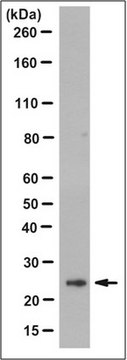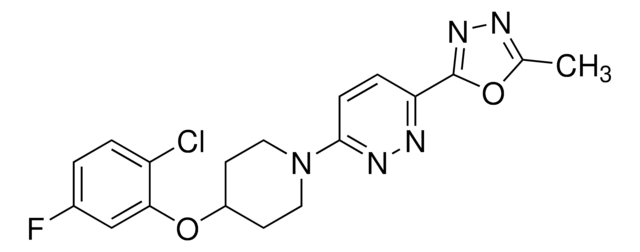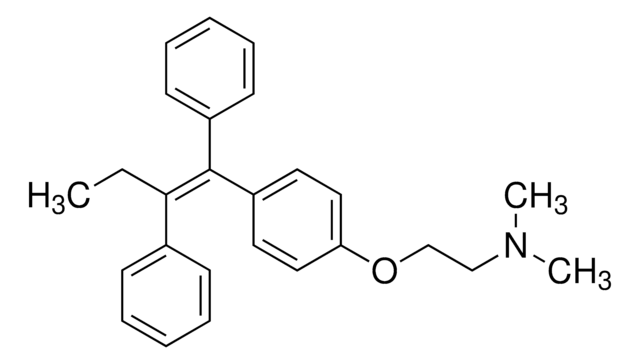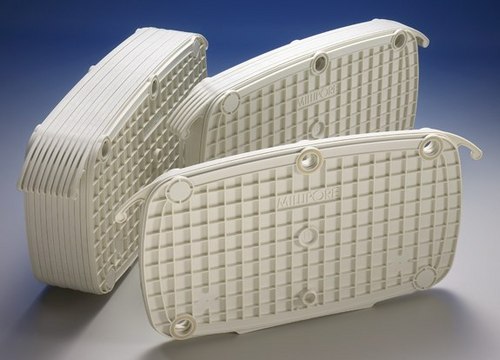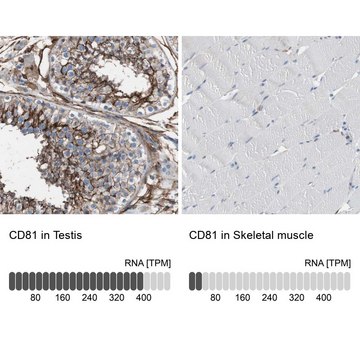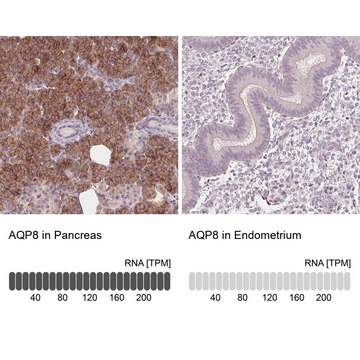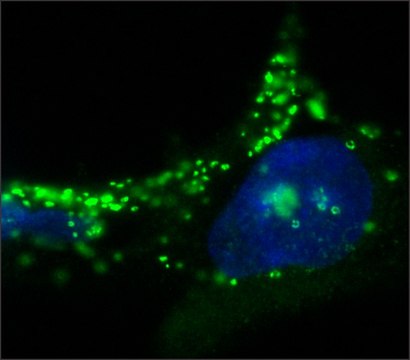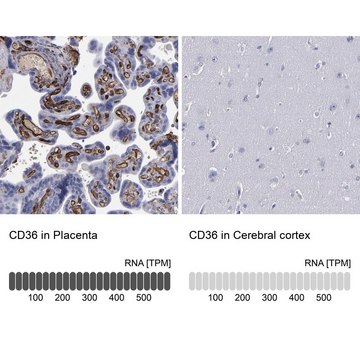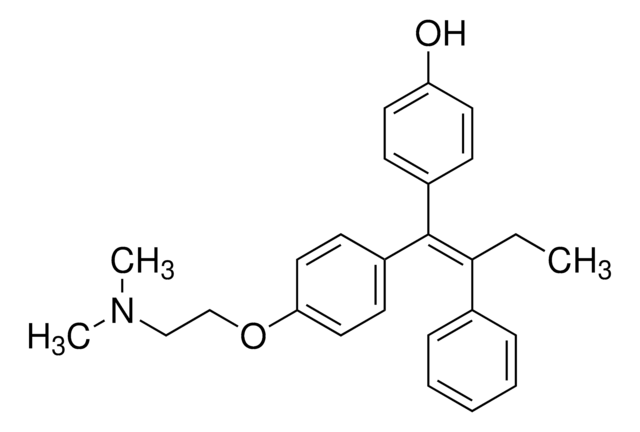推荐产品
生物来源
mouse
质量水平
抗体形式
purified antibody
抗体产品类型
primary antibodies
克隆
WTH-1, monoclonal
种属反应性
mouse, rat
技术
activity assay: suitable
flow cytometry: suitable
immunohistochemistry: suitable
immunoprecipitation (IP): suitable
western blot: suitable
同位素/亚型
IgG2aκ
NCBI登记号
UniProt登记号
运输
dry ice
靶向翻译后修饰
unmodified
基因信息
mouse ... Cd1D(110290701)
rat ... Cd1D(104874051)
相关类别
一般描述
Antigen-presenting glycoprotein CD1d (UniProt Q63493; also known as CD1D antigen, CD1d1 antigen, T-cell surface glycoprotein CD1d) is encoded by the Cd1d (also known as Cd1d1) gene (Gene ID 25109) in rat species. CD1d is a nonpolymorphic MHC class I-like molecule which presents nonpeptide ligands (e.g. glycolipids) to natrual killer T (NKT) cells. NKT cells are known to have multiple effects on innate and adaptive immune responses and on the development of pathological conditions. In additon to hematopoietic cells, CD1d protein is also reported to be detected in non-lymphatic tissues in rat, such as the exocrine pancreas and Paneth cells. CD1d is initially produced with a signal peptide sequence (a.a. 1-17), the removal of which yields the mature CD1d with a large extracellular region (a.a.18-304), a transmembrane domain (a.a. 305-325), and a short cytoplasmic tail (a.a. 326-336).
应用
This Anti-CD1d Antibody, clone WTH-1 is validated for use in Flow Cytometry, Western Blotting, Immunoprecipitation, Immunohistochemistry and Activity Assay for the detection of CD1d.
Western Blotting Analysis: A representative lot detected endogenous CD1d in rat spleen, thymus, and pancreas tissue homogenates, as well as exogenously expressed murine and rat CD1d in lysates of transfected Raji cells (Monzon-Casanova, E., et al. (2010). PLoS One. 5(9): e13089).
Flow Cytometry Analysis: A representative lot detected the surface expression of CD1d on isolated thymocytes from rats and mice, as well as on Raji transfectants expressing murine or rat CD1d (Monzon-Casanova, E., et al. (2010). PLoS One. 5(9): e13089).
Immunoprecipitation Analysis: A representative lot immunoprecipitated CD1d from isolated mouse and rat thymocytes, as well as exogenously expressed murine and rat CD1d from transfected Raji cells (Monzon-Casanova, E., et al. (2010). PLoS One. 5(9): e13089).
Immunohistochemistry Analysis: A representative lot detected CD1d immunoreactivity using frozen tissue sections from rats and mice (Monzon-Casanova, E., et al. (2010). PLoS One. 5(9): e13089).
Activity Assay: A representative lot inhibited CD1d antigen presentation cells from activating type I NK cells using total splenocytes from rats and mice. Clone WTH-1 also blocked mCD1d1-transduced LBB cells from activating co-cultured VIII24.1 murine type II NKT cells, while WTH-1 enhanced XV19.2 murine type II NKT cell activation by mCD1d1-transduced Raji cells (Monzon-Casanova, E., et al. (2010). PLoS One. 5(9): e13089).
Application Note: Clone WTH-1 (Cat. No. MABC959) and WTH-2 (Cat. No. MABC960) gave inferior IHC staining in mouse than in rat organs, especially in non-lymphatic tissues. In addition, clone WTH-2 produced a much lower signal in mice than mAb WTH-1. To detect low-grade expression, mouse non-lymphatic organs should be stained using a highly sensitive tyramide amplification procedure with inclusion of C57BL/6 CD1d2/2 mouse organs as negative controls (Monzon-Casanova, E., et al. (2010). PLoS One. 5(9): e13089).
Flow Cytometry Analysis: A representative lot detected the surface expression of CD1d on isolated thymocytes from rats and mice, as well as on Raji transfectants expressing murine or rat CD1d (Monzon-Casanova, E., et al. (2010). PLoS One. 5(9): e13089).
Immunoprecipitation Analysis: A representative lot immunoprecipitated CD1d from isolated mouse and rat thymocytes, as well as exogenously expressed murine and rat CD1d from transfected Raji cells (Monzon-Casanova, E., et al. (2010). PLoS One. 5(9): e13089).
Immunohistochemistry Analysis: A representative lot detected CD1d immunoreactivity using frozen tissue sections from rats and mice (Monzon-Casanova, E., et al. (2010). PLoS One. 5(9): e13089).
Activity Assay: A representative lot inhibited CD1d antigen presentation cells from activating type I NK cells using total splenocytes from rats and mice. Clone WTH-1 also blocked mCD1d1-transduced LBB cells from activating co-cultured VIII24.1 murine type II NKT cells, while WTH-1 enhanced XV19.2 murine type II NKT cell activation by mCD1d1-transduced Raji cells (Monzon-Casanova, E., et al. (2010). PLoS One. 5(9): e13089).
Application Note: Clone WTH-1 (Cat. No. MABC959) and WTH-2 (Cat. No. MABC960) gave inferior IHC staining in mouse than in rat organs, especially in non-lymphatic tissues. In addition, clone WTH-2 produced a much lower signal in mice than mAb WTH-1. To detect low-grade expression, mouse non-lymphatic organs should be stained using a highly sensitive tyramide amplification procedure with inclusion of C57BL/6 CD1d2/2 mouse organs as negative controls (Monzon-Casanova, E., et al. (2010). PLoS One. 5(9): e13089).
质量
Evaluated by Flow Cytometry in rat thymocytes and splenocytes.
Flow Cytometry Analysis: 1.0 µg of this antibody detected CD1d in rat thymocytes and splenocytes.
Flow Cytometry Analysis: 1.0 µg of this antibody detected CD1d in rat thymocytes and splenocytes.
目标描述
~38 kDa calculated
外形
Format: Purified
其他说明
Concentration: Please refer to lot specific datasheet.
未找到合适的产品?
试试我们的产品选型工具.
储存分类代码
12 - Non Combustible Liquids
WGK
WGK 2
闪点(°F)
Not applicable
闪点(°C)
Not applicable
我们的科学家团队拥有各种研究领域经验,包括生命科学、材料科学、化学合成、色谱、分析及许多其他领域.
联系技术服务部门